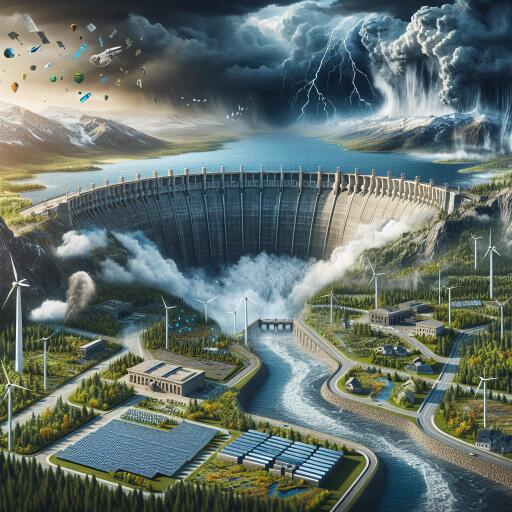
Are We Really Prepared for the Climate Crisis When It Comes to Infrastructure?
In the wake of recent events, the conversation surrounding climate resilience and adaptation has never been more critical. A vivid illustration of this urgency emerged from Australia, where extreme weather conditions have begun to starkly highlight the vulnerabilities within our infrastructure. Particularly telling was an incident involving the Sydney regional line at Bomaderry, which suffered considerable damage due to heavy rains. This instance is a glaring signal that the climate crisis is no longer a distant threat but a current reality demanding immediate and strategic action.
Our climate is undeniably transforming, marked by an increase in extreme weather occurrences. Science supports the premise that for every degree of warming, the atmosphere retains 7% more moisture, intensifying rainfall and, consequently, flooding. This phenomenon places our existing infrastructure, especially in low-lying areas, at great risk. For instance, after Kiama, the railway line drops to elevations particularly susceptible to flooding, as demonstrated by the recent damages to the rail line down the southern NSW coast.
The challenges, however, extend beyond just rail infrastructure. Australia and other parts of the world are grappling with broader, systemic vulnerabilities. The risk of prolonged droughts threaten water security, a reality starkly observed in southern and western Australia. The dilemma is compounded by the spiraling costs associated with fortifying and expanding desalination plants, alongside the essential yet overlooked necessity for water recycling systems.
Adaptation to climate change encompasses an array of strategies, from disaster preparedness to gradual system adjustments. The effects of higher temperatures on electricity transmission and the structural integrity of buildings highlight the need for comprehensive planning and intervention. For example, instances of rail lines bending under extreme heat and highways melting underscore the immediate effects of rising temperatures on our infrastructure.
Local and state governments, along with infrastructure owners, have begun to sketch out adaptation plans, but the initiatives are often fragmented and underfunded. While instances like Brisbane Airport’s decision to elevate its new runway serve as beacons of proactive adaptation, they are exceptions rather than the norm. The reality remains that vast stretches of coastal towns and critical infrastructures are under dire threat from sea-level rise and extreme weather events, with insufficient resources to mitigate these risks adequately.
The notion that market mechanisms alone can address the financial burden of climate adaptation is increasingly untenable. The reality of climate change adaptation is that it is both local and specific in its impact, yet also broad and comprehensive in terms of its financial and logistical demands. This juxtaposition highlights a critical gap where private investment recoils, unable to shoulder the enormity or unpredictability of climate-related risks, thus leaving a void that only national policies and public funding can fill.
In Australia, the discourse around national adaptation policy has been lethargic at best, with recent movements towards crafting a cogent national adaptation plan signaling a positive yet belated shift in priority. The earmarking of funds towards planning represents a preliminary step in a journey that promises to be financially demanding and complex.
The imperative for a robust, well-funded national adaptation strategy cannot be overstated. As localized vulnerabilities translate into national challenges, the response must be coordinated, comprehensive, and, crucially, anticipatory rather than reactionary. This shift necessitates a reevaluation of how societies finance, prioritize, and implement climate adaptation measures. Without a doubt, the task ahead is monumental, underscoring the need for concerted effort from all sectors of society—public and private alike—to safeguard our future against the inevitable impacts of climate change.
As we stand at this juncture, facing the palpable impacts of climate change on our infrastructure, the question remains: Are we truly prepared to tackle the climate crisis head-on? Only through collaborative effort, innovative adaptation strategies, and the political will to prioritize and invest in climate resilience can we hope to answer this question affirmatively.





Leave a Reply